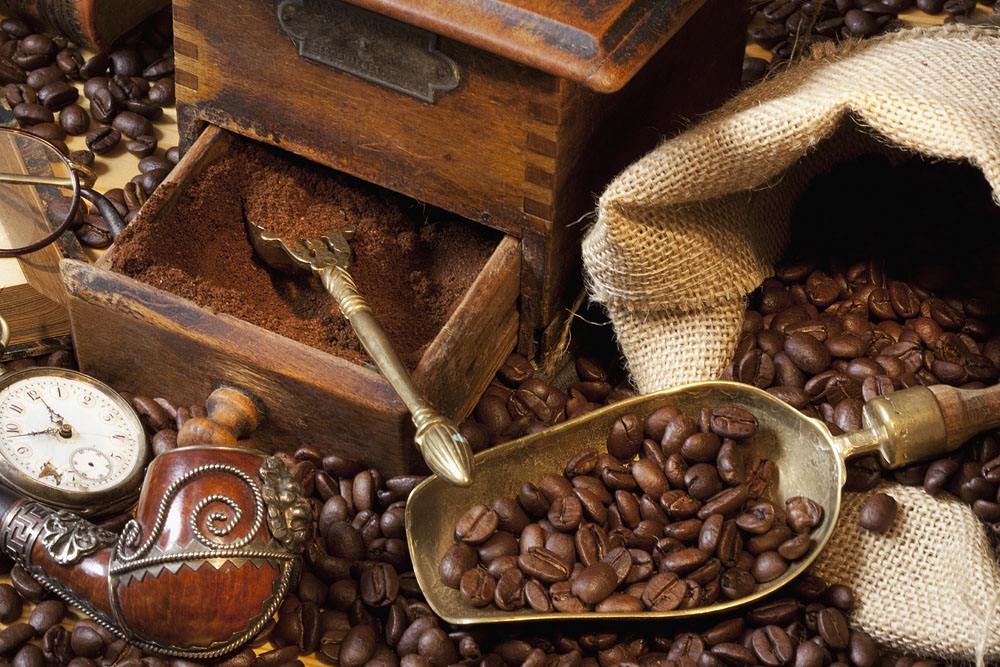Caffeine, wonderful and fragrant, has become the most popular addictive drink in the world. Why is it delicious?
Professional coffee knowledge exchange More coffee bean information Please pay attention to coffee workshop (Weixin Official Accounts cafe_style)

Coffee is the world's most popular addictive ingredient-caffeine-a wonderful, aromatic source that has spread unabated since it arrived in Ethiopia in the 15th century.
Coffee was an alternative to alcohol in the Arab world, leading to the rise of a café culture surrounded by enlightening dialogue and the exchange of new ideas. Then, in the eighteenth century, during the Age of Enlightenment, coffee houses became places for chess, politics, and social and business negotiations, writes Tom Stendag in A History of the World in Six Glasses.
Today, coffee is loved all over the world, with Finland (unexpectedly) the world's largest coffee drinker, with 608.2 litres per capita.
coffee beans
According to the World Bank, coffee is the second most valuable export commodity of developing countries after oilseeds. Coffee farmers receive only 10 percent of the $80 billion in annual revenues generated by the coffee industry. The average coffee farmer earns 15 cents for selling a pound of coffee, while coffee pickers earn 4 cents for every pound of coffee they pick.
To combat this injustice, a campaign was launched in the Netherlands in 1988 to institutionalize fair trade in coffee. Fairtrade certification seeks to guarantee fair labor conditions, fair prices, environmental sustainability, direct trade, transparency, and support community development. Although Fairtrade coffee accounts for only a small portion of the global coffee supply, it is growing in countries in Africa, Central and South America, Oceania and Asia, and is already readily available in cafes in large cities.
Coffee connoisseurs believe that well-prepared coffee embodies "terroir," meaning that the taste of coffee is inextricably linked to its origin. Some Kenyan coffees are dry and shiny with a berry tart, while those from the Andes in South Africa are smooth and sweet with a strong sugar flavor, experts said. Brazilian coffee is one of the top three coffees in the world, known for its low acidity and is the preferred blend, writes Kevin Sinnott in The Art and Craft of Coffee. Yemeni beans, he says, are balanced and complex enough to blend well with java and sumatra.
Turkey
Coffee has been at the heart of Turkish culture since the first café was founded in the 1500s. Breakfast in Turkish: kavalt? The c means "before coffee" and reflects the time locals enjoy their first cup of coffee of the day. Turkish coffee is a small cup, coffee powder precipitation in the bottom, dark color, mellow taste sweet. Coffee is heavily sweetened and sometimes flavored with cardamom and chicory to give it a rich, dessert feel.
Fortune telling with coffee is a tradition passed down from generation to generation in Turkey. After the guest drinks the coffee, the host turns the coffee cup upside down, allows the coffee powder to cool, and then tells the fortune according to the pattern formed by the coffee powder.
Italy
In Italy, un caffé is a small spoonful of espresso, which means an ounce of espresso. Italians drink coffee (espresso) throughout the day, while cappuccino and latte, two national drinks, are traditionally drunk only in the morning. Cappuccino is made with espresso, steamed milk and foam, latte is made with espresso and steamed foam. Travel writer Lee Marshall, describing Italian coffee culture in his Ten Commandments, writes that milk drinks are generally not drunk after meals because "Italians fear that hot milk will impact their food-filled stomachs."
Brazil
Like Italians, many Brazilians drink espresso all day. The Brazilian version of espresso is called "cafezinho" and is obtained by mixing hot water, fine coffee powder and sugar and filtering through a filter. Like Turkish coffee, cafezinho is dark in color, rich and sweet in taste, and drunk in small cups, but not as strong. In South America and Central America, coffee is sometimes brewed with a "sock" filter, a simple cloth bag that acts as a sieve.
Vietnam
In the 19th century, Vietnam was under French colonial rule, and fresh milk was difficult to preserve, so condensed milk was used instead. Vietnamese iced coffee is called "cà phês?" a ? ", brewed with strong coffee and concentrated milk, stirred and poured into ice cubes, is a pleasant delicacy." On hot, humid summer days, it is sweet and pleasant.
Thailand
Thailand's weather gives Thai coffee its cold, sweet, creamy character. Thai coffee is strong, flavored with chicory, condensed milk and ice. It's the perfect dessert after a spicy Thai meal.
Vienna
The United Nations has inscribed the "Vienna Cafe Culture" on the Austrian Intangible Cultural Heritage List. This dates back to the 1600s when the Ottoman Turks besieged Vienna. Later the Turks were defeated and driven out of Austria, reportedly leaving behind bags of coffee beans when they withdrew. Today, the kaffeehaüser is usually open from 6 a.m. until midnight, and guests tend to sit around a glass of wiener mélange and relax for hours. This coffee is made with steamed milk and topped with a layer of foam.
US
Coffee has always been popular in America, largely because the British tax tea heavily. But coffee culture did not dominate the business scene until after the establishment of chains such as Beats Coffee and Starbucks. They were founded in 1966 and 1971 respectively.
Although drip coffee is ubiquitous throughout the United States, the country is best known for its Americana coffee, which is a blend of espresso and hot water. American coffee is said to have originated during World War II, when American soldiers stationed in Italy discovered that "coffee" was just a small spoonful of Italian coffee. So, to make coffee more like regular coffee, they add hot water to it.
Kenya
Kenya is a major coffee-producing country, and there has always been a special way to drink coffee. Kahawa chungu, or bitter coffee, is a traditional coffee made in a copper pot over a charcoal stove and is usually drunk only by men, Reuters reported. The latest development is that cafes are also appearing in big cities like Nairobi. Unfortunately, most of Kenya's locally produced high-quality coffee continues to be exported worldwide.
Original article from BBC Travel
Important Notice :
前街咖啡 FrontStreet Coffee has moved to new addredd:
FrontStreet Coffee Address: 315,Donghua East Road,GuangZhou
Tel:020 38364473
- Prev

Coffee beans vary from place to place. What flavor, what beans are good to drink and how to brew them?
Professional coffee knowledge exchange More coffee bean information Please pay attention to coffee workshop (Weixin Official Accounts cafe_style) Coffee is divided into three categories of beans, Arabica beans, Robusta beans, and Liberian beans (now few on the market) There are many Arabica and Robusta derivatives on the market, such as: Typica, Bourbon
- Next

What is decaf? Will Starbucks' decaf coffee be healthier?
Professional coffee knowledge exchange more coffee bean information Please pay attention to the coffee workshop (Wechat official account cafe_style) Coffee is a necessary drink for many people every day, not only to boost or wake up, but also a kind of life, but many people are afraid that caffeine will keep them awake and can't get access to delicious coffee, is it because you drink the wrong coffee that you are so worried about losing it?
Related
- Beginners will see the "Coffee pull flower" guide!
- What is the difference between ice blog purified milk and ordinary milk coffee?
- Why is the Philippines the largest producer of crops in Liberia?
- For coffee extraction, should the fine powder be retained?
- How does extracted espresso fill pressed powder? How much strength does it take to press the powder?
- How to make jasmine cold extract coffee? Is the jasmine + latte good?
- Will this little toy really make the coffee taste better? How does Lily Drip affect coffee extraction?
- Will the action of slapping the filter cup also affect coffee extraction?
- What's the difference between powder-to-water ratio and powder-to-liquid ratio?
- What is the Ethiopian local species? What does it have to do with Heirloom native species?

